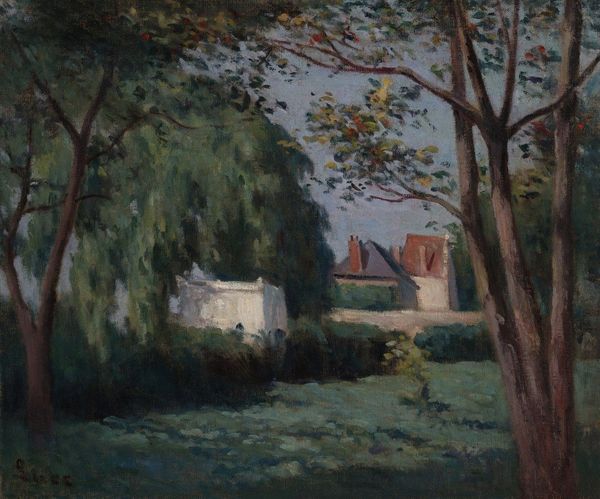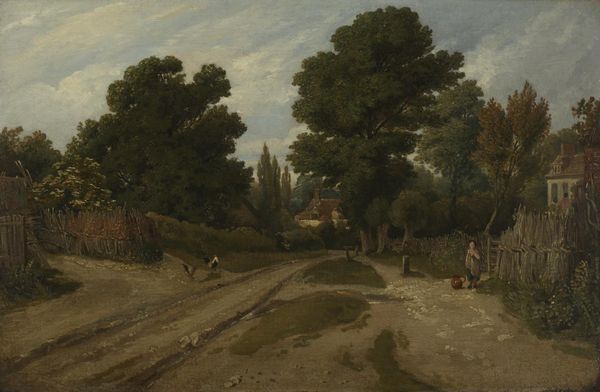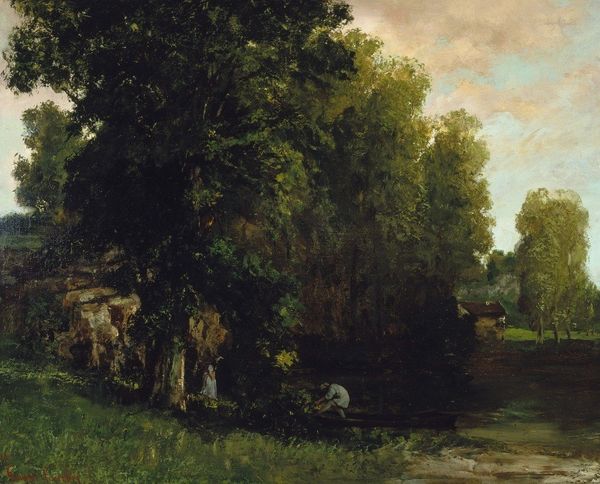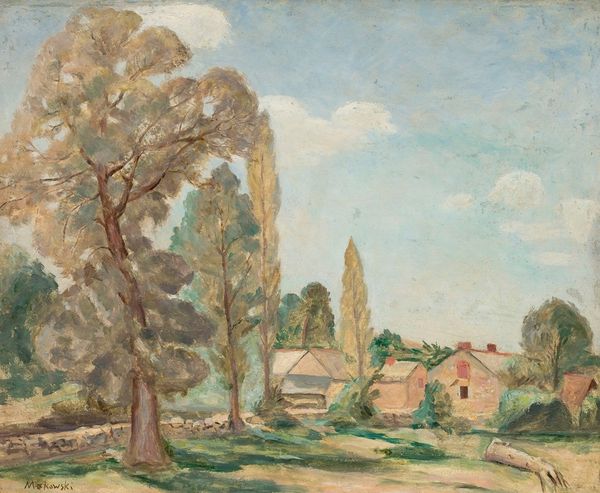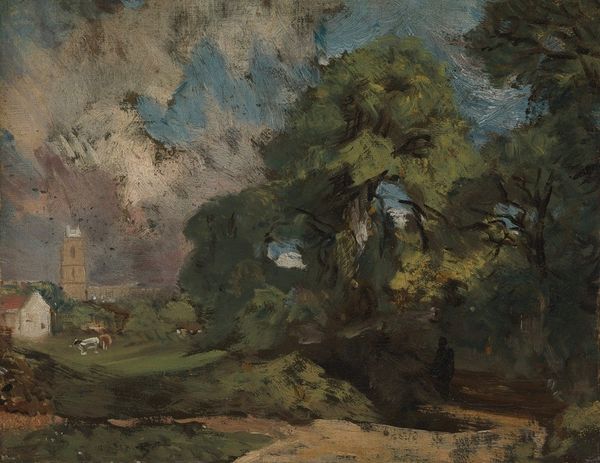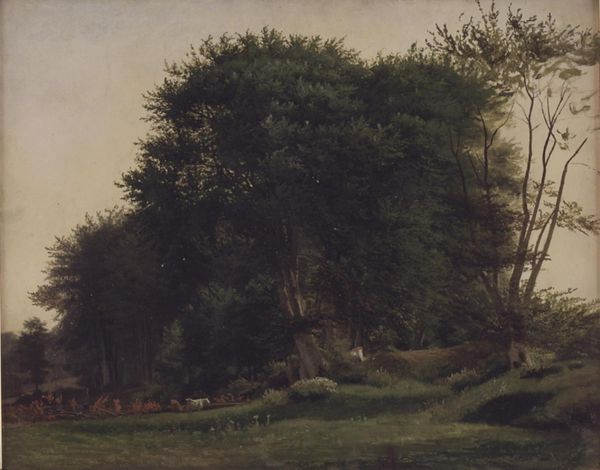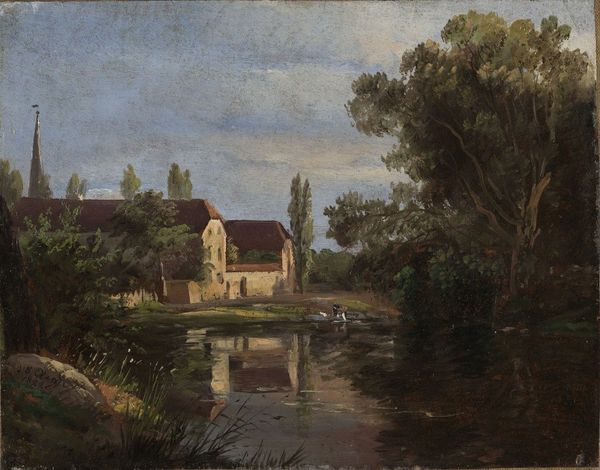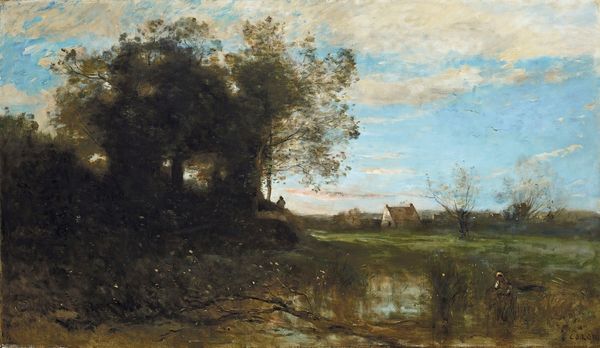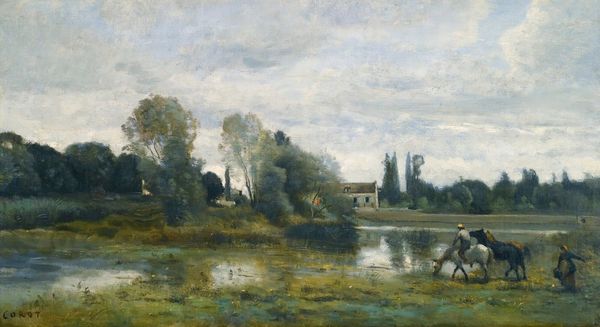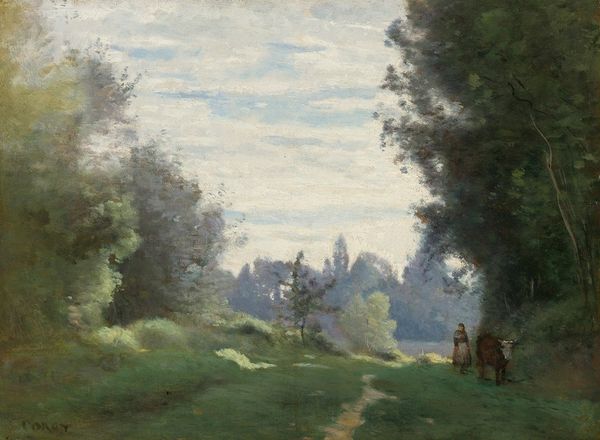
painting, oil-paint
#
painting
#
oil-paint
#
landscape
#
impressionist landscape
#
oil painting
#
realism
Dimensions: 36.7 cm (height) x 48.3 cm (width) (Netto)
Editor: This is Christen Købke's "View of Falkonerallé outside Copenhagen," painted between 1845 and 1847, using oil paints. It’s such a peaceful scene. What I’m really struck by is the texture – you can almost feel the brushstrokes in the trees. How do you interpret this work? Curator: For me, this painting really speaks to the socio-economic shift happening at the time. We're seeing an emerging middle class with leisure time, reflected in the artist's choice to depict an everyday scene, not a grand historical subject. The focus on the Falkonerallé itself becomes important. Who has access to this space? What kind of labor goes into maintaining this environment? Editor: That's a very different take! I was focused on the tranquility, but now I see the avenue as a product of labor and access. Do you think the materials Købke used impacted his approach? Curator: Absolutely. The ready availability of oil paints, thanks to industrial advancements, democratized art-making to some extent. The ability to capture fleeting moments of light and shadow, en plein air, transformed artistic practice. And the surface becomes a site of engagement with the new materials and techniques. Look closely: What story do the brushstrokes themselves tell about the artist's engagement with his medium? Editor: So, even the seemingly simple act of painting a landscape can reveal a lot about the world around the artist at the time? Curator: Precisely. The artwork is not merely a reflection, but a material product of its specific historical and economic conditions. Examining those conditions opens new avenues for interpretation. Editor: That's given me a whole new perspective on how to look at paintings. Curator: And hopefully a broader understanding of the role that materiality plays in artistic expression and reception.
Comments
No comments
Be the first to comment and join the conversation on the ultimate creative platform.

